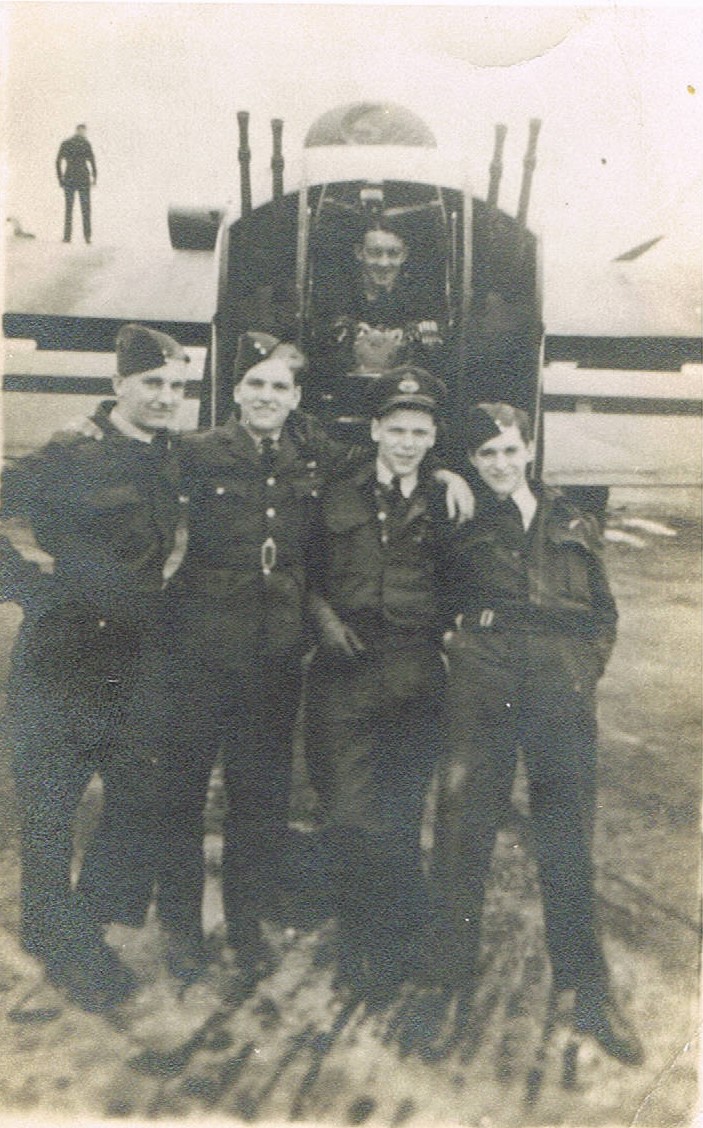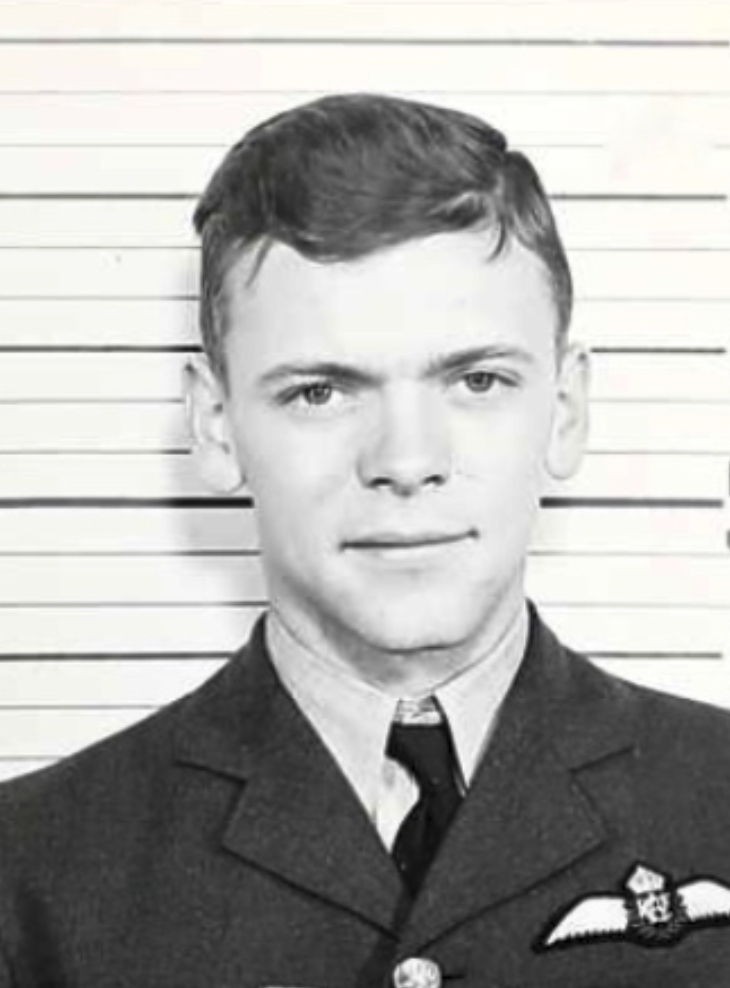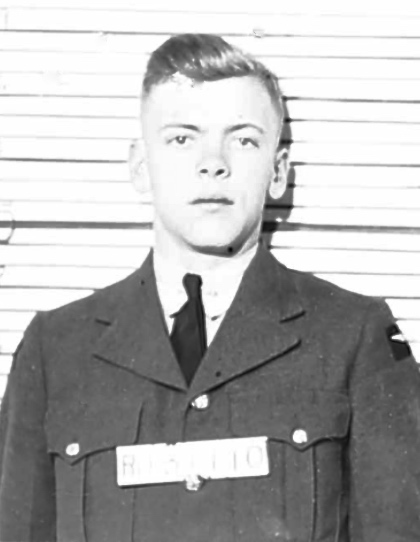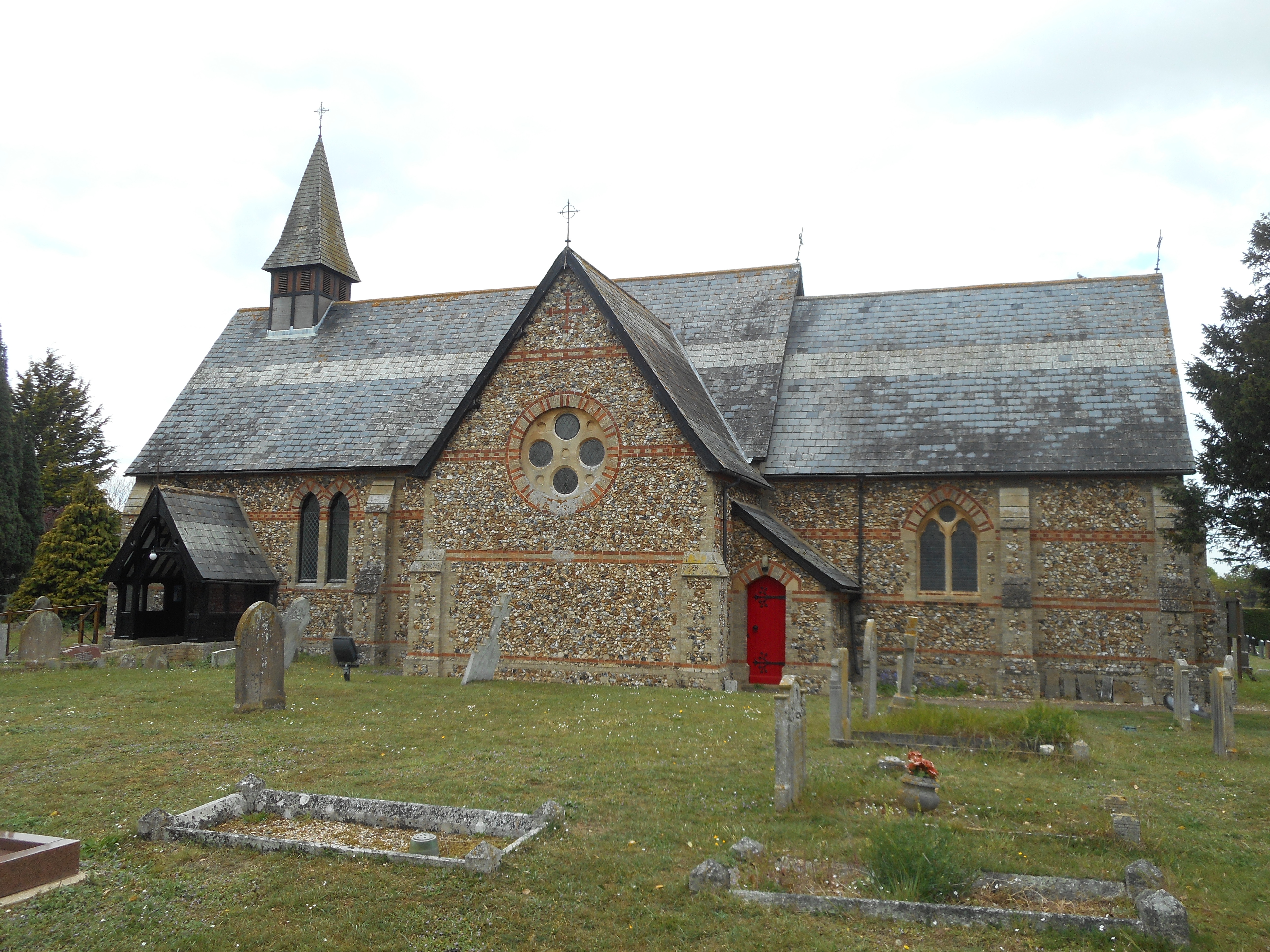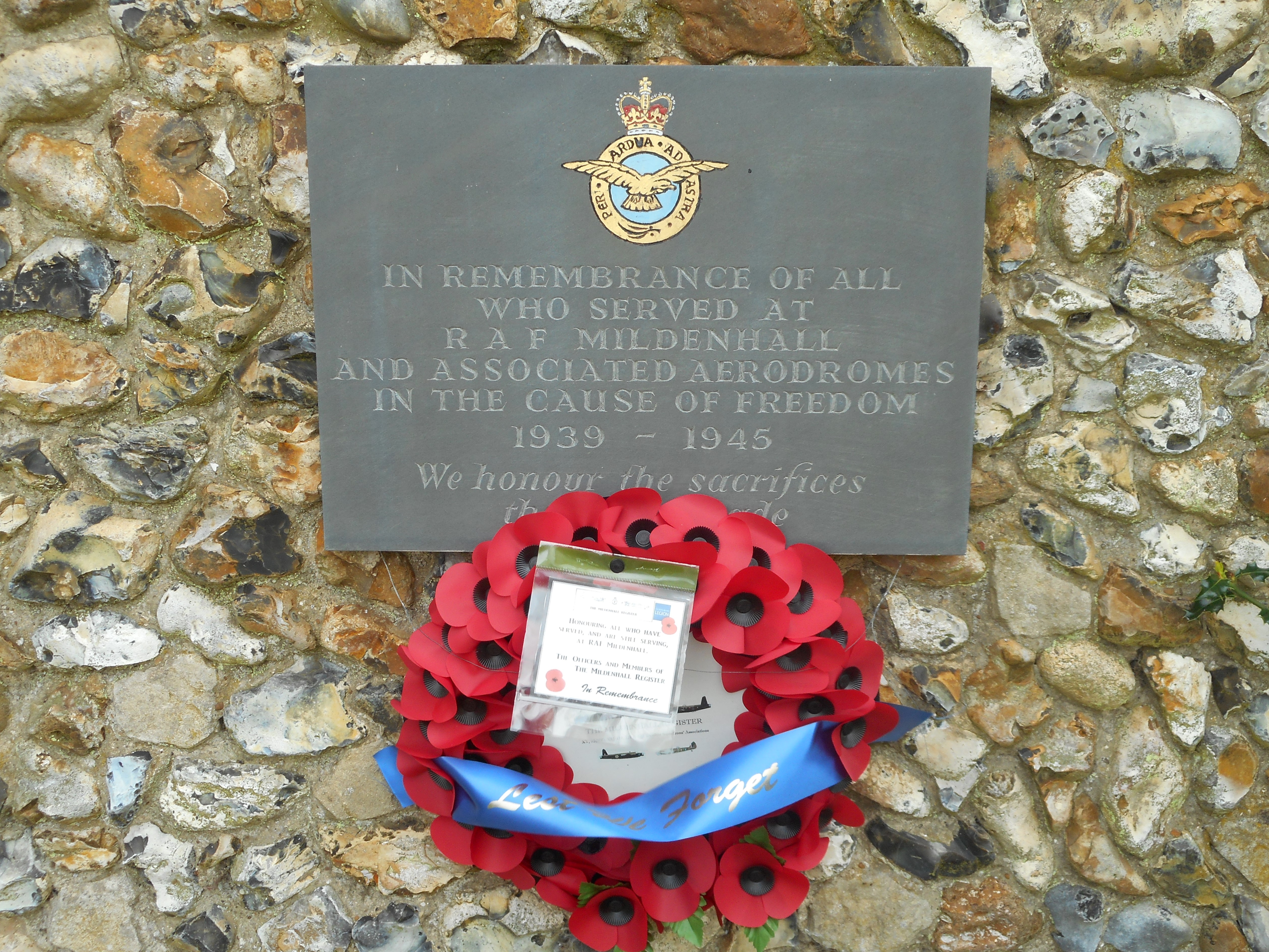| Ron Hayles, surviving mid-upper gunner: "On the 27th of April 1944, 622 Squadron, RAF Bomber Command was detailed to attack Fredrichshafen, Germany, flying at about 20,000 feet and bombing the target with high explosives. The aircraft was approaching our turning point before the run into the target when it was attacked from dead astern under. The attack was a complete surprise, there was no moon, just complete darkness. The aircraft was equipped with H2S radar equipment which transmits pulses and the crew and Intelligence was not aware at the time that the Germans were able to home in on the signal. The first attack came from dead astern and under the tail, by three Junkers 88’s night fighters. As the aircraft was attacked, from the rear thuds were heard at the rear and flashes and the port elevator was badly buckled. The rear gunner was out of communications and could not direct the pilot on evasive maneuvers, so the Mid-Upper Gunner took control of directing the pilot with evasive direction. From the bursts of fire, they were under attack by at least two attacking aircraft and the gunner could not see them, so he decided to have the aircraft keep on course, rather than attempting to dive away from the attacking aircraft, which was what the attackers would be expecting. A second attack from dead astern upper, hit the starboard elevator and starboard inner undercarriage which burst into flames. As the attacking aircraft was coming in closing in from the starboard quarter level and at about 350 yards the pilot was directed to corkscrew to starboard. The immediate evasive action by the pilot, even with the badly buckled port elevator showed that this experienced pilot had the aircraft under full control. His response to evasive direction was magnificent, but the aircraft was hit about the starboard inner engine and a second later this portion of the wing burst into flames. The first impression was that the starboard inner engine was on fire but from dialogue between crew members in the cockpit, it was determined that the fire extinguisher system had been activated. The pilot was in full control of the aircraft, but the fire did not die out as was hoped for by the crew. The danger of flames was increasing all the time and the captain side slipped the aircraft to keep them away as much as possible, as the aircraft kept losing height at the same time.
The flames were causing the seam aft of the starboard inner engine to melt and the pilot was informed of this, who then ordered everyone to collect their parachutes. The aircraft continued to lose height and the flames had enveloped most of the wing and half of the seam had melted, the pilot was informed of this and he ordered everyone to bale out. I then plugged into the intercom system and informed the pilot that he was bailing out and that the rear gunner was still in his turret and he would let him know we were getting out. The captain’s last words to me were “Yes, OK, but hurry, we’re at 4,500 feet, if he’s not hit he might make it. So long Ron, good luck.” I then opened the bulkhead door leading to the rear turret and saw the rear gunner turn his head towards me, I patted my parachute to indicate that we were bailing out and he understood. The aircraft was now at about 4,000 feet when I bailed out. The pilot had the aircraft under perfect control, it was still losing height in a sinking fashion and the flames had enveloped the fuselage alongside the burning wing." Ron's son is quoted as saying "Because of James Watson’s sacrifice six families have been able to have had three generations that they never would have had if he had not kept the aircraft aloft that fateful night so long ago". |
